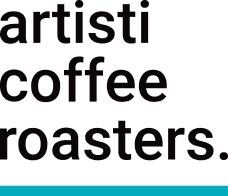Ever wonder why your latte art is perfect one day and a "galaxy" the next? Consistency in latte art isn't just about muscle memory—it's about following a defined, repeatable process. This guide, straight from the Artisti Fundamentals Training, breaks down the steps to master the basic, yet beautiful, heart pattern.
By focusing on these precise moments in the pour, you can eliminate the bitter taste of inconsistent mixing and achieve that desired glossy finish every time.
Why Your Pour Matters More Than You Think
A consistent pour isn't just for looks; it dramatically impacts flavor.
-
Flavour Consistency: A proper initial pour ensures a good mix of coffee and milk. If you pour too fast or too high initially, you might push the bitter crema to the surface or create a weaker, separated drink.
-
The Right Tools: Don't sabotage your efforts! Many home machines come with basic jugs that hinder latte art. Invest in a jug with a skinny spout (like the Rhinoware Stealth) designed for precision.
The Artisti 3-Step Pouring Technique
We'll break the heart pour into three definitive stages: The Mix (Canvas Creation), The Drop (Pattern Start), and The Lift (Pattern Finish).
Stage 1: The Mix (Creating the Canvas)
The goal here is to thoroughly blend the espresso and milk to create a uniform, blank canvas surface without starting the pattern too early.
-
Swirl the Espresso: Gently swirl your espresso in the cup to break up the thick crema and prepare it for mixing.
-
Angle the Cup: Tilt your cup significantly towards the jug. This reduces the distance the milk has to fall, improving control and minimizing splashing.
-
The Mixing Pour (1-2-3): Starting from slightly above the cup, pour your milk in a circular motion, moving around the cup rather than just letting it fold on itself. Count to three (1-2-3) as you pour.
-
Tip: Aim to be three-quarters full when you finish this stage. The speed of the pour should blend the milk but not create any surface pattern.
-
-
Level the Cup: As you finish the "3," quickly level the cup back up to a flat position.
Stage 2: The Drop (Starting the Heart)
Now that you have a smooth, dark surface, it's time to introduce the pattern. This requires getting the milk's froth to sit on top of the crema.
-
Take a Breath: A momentary pause (a slight breath) helps the collected froth at the back of the jug consolidate and prepare to flow out.
-
Get Down Low: Lower the nose of your jug as close to the surface of the milk as possible. This is critical: if you stay too high, the milk will cut through the crema rather than sit on top.
-
The Drop and Stay: Confidently drop into the center of the cup and hold your position. You should immediately see the white pattern bloom on the surface.
-
Stay Centered: Do not drift. Stay centered and continue pouring until the pattern reaches the edge of the cup and the cup is almost completely full. (Optional: You can add a gentle wiggle here if desired, but for a basic heart, staying put is enough).
Stage 3: The Lift (Finishing the Heart)
The shape is formed, now you need to define the heart's point.
-
Lift Up: Once the cup is completely full, slowly lift the jug upwards and away from the milk surface.
-
Pull Through: As you lift, draw the stream of milk straight through the center of the pattern to create the defining point of the heart.
-
Stop: The moment the stream reaches the far edge of the cup, stop the pour.
Practice Makes Perfect: Use Water First! 💡
Before wasting milk and espresso, practice the motions using water in your jug and an empty cup (or a cup with a splash of espresso for realism). Focus on:
-
Round and Round: The smooth, controlled circular motion of the mix.
-
The Pause and Drop: The defined moment of stopping the mix, dropping the nose, and starting the pattern.
-
Staying Centered: Ensuring you do not drift once the pattern begins.
Tip on Speed: When switching from Stage 1 to Stage 2, the confidence and speed of the drop is what helps the thicker froth come out of the jug to sit on top of the canvas. Hesitation will cause the milk to solidify and prevent the pattern from forming.
Latte Art Fails: The Tools and the Technique
If you're still struggling, check these common pitfalls:
-
Milk Texture: This guide assumes you have properly textured latte art milk (like wet paint, not dry foam or separated liquid). If your milk isn't right, the pattern can't form. Full-cream milk is generally easiest for practicing.
-
The Jug: Using a jug with a wide or blunt spout makes fine patterns almost impossible.
-
Cup Angle: Failing to angle your cup (angling back towards the jug) means you're pouring from too high a distance, inhibiting the froth from floating on top.
You can do this! With practice and the defined steps of the Artisti technique, you'll find the consistency that was missing in your home brewing.
What's the next pattern you want to master after the heart? Let us know in the comments!










